Manufacturers can’t just produce as many widgets as they want. There are financial constraints, of course, but there is also demand to think about. Making more than the market will support is going to lead to extra costs in production and warehouse that can bust the bank. That’s why a production budget is essential.
But what is a production budget and what should be included in one? We’ll answer those questions and then show you how to make a production budget so you’re always producing what your customers want. We’ll explain the formula for a production budget and even provide an example so you’ll fully understand the concept.
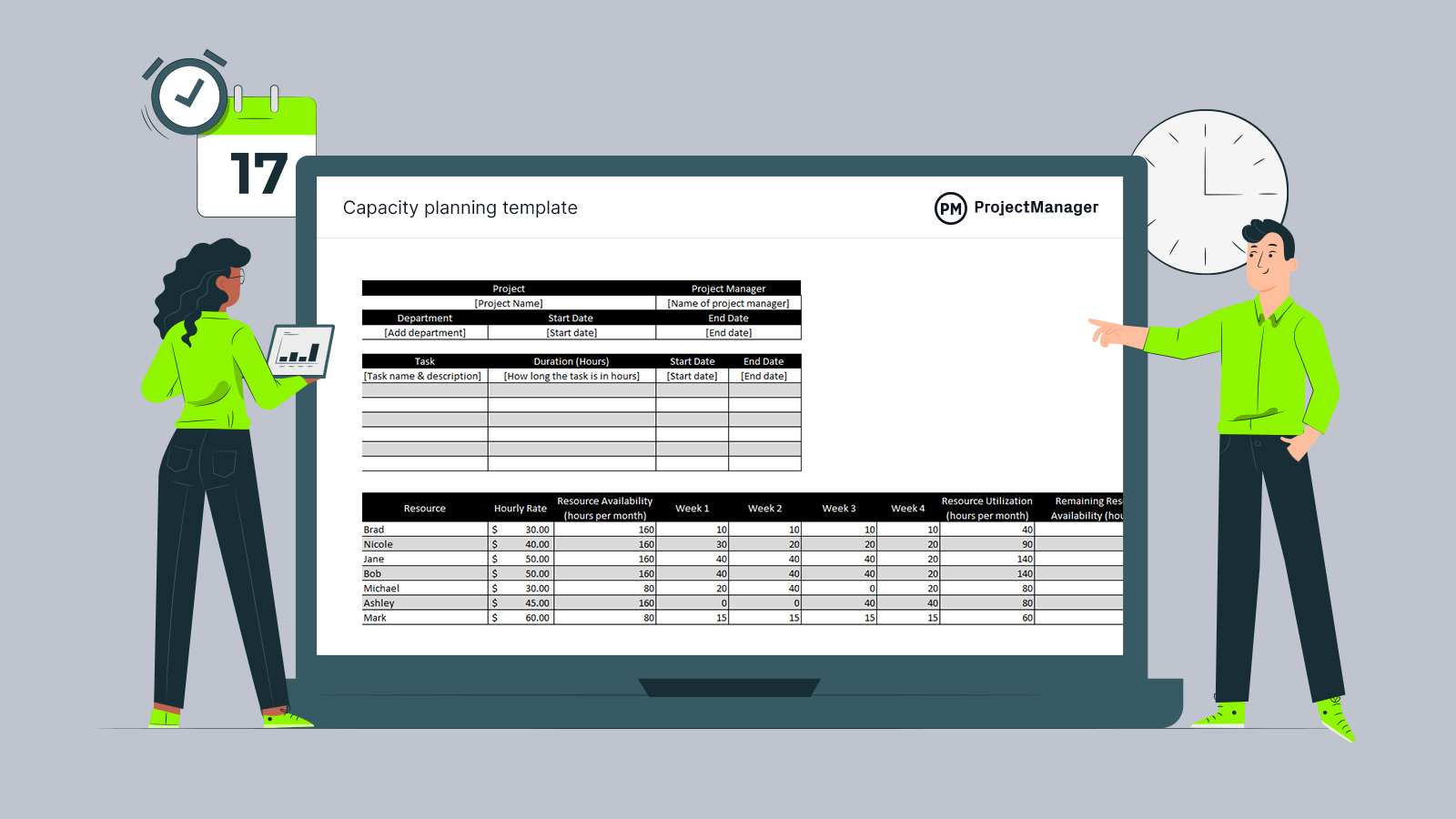
Get your free
Capacity Planning Template
Use this free Capacity Planning Template for Excel to manage your projects better.
What Is a Production Budget?
A production budget is a document that calculates the number of units of a product will be manufactured to meet the estimated sales demand. Manufacturers make a production budget quarterly, though sometimes they will also be produced on a monthly basis.
A production budget doesn’t involve inventory costs. It is merely a budget of units of a specific product that needs to be produced over a time period. In order to produce the right amount of product units, manufacturers need to forecast their future sales figures and also include the number of units needed for them to sell in order to make a profit after labor and material costs. A production budget is a component of the production plan, which is a more thorough document that describes other aspects of production such as scheduling and costs.
There is usually an overstock that is placed in inventory in case of extra sales or to have a jump on the next quarter’s production. The production budget is usually made for a push manufacturing system, in which businesses produce products based on demand planning, and used in material requirements planning.
Once you have calculated the production budget you have to make a production plan. Project management software can help. ProjectManager is award-winning project management software that can help you plan production budgets on Gantt charts by providing visual insights into the timeline and resource allocation. Assign cost estimates to each task and distribute budget allocations over time to align spending with the actual production schedule. Then, track planned vs. actual data to track resource utilization. Get started with ProjectManager today for free.
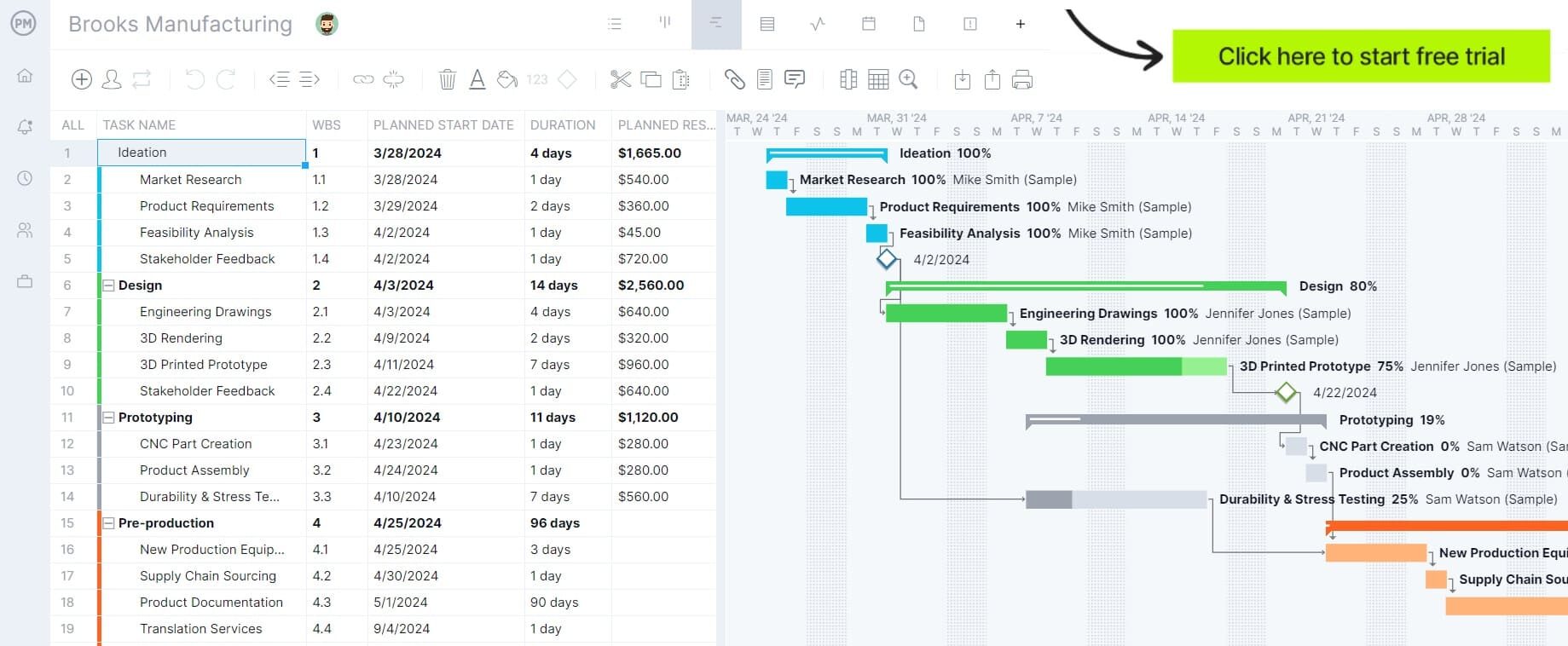
What Should Be Included In a Production Budget?
To have a more accurate production budget there are many factors to consider. You want to have an accurate forecast of future sales as well as your starting and ending inventory. Here is what should be included in a production budget with a short explanation.
Beginning Inventory
Your beginning inventory is the number of units you have left over from the previous production period. Another way to say that is it’s the ending inventory for the previous budgetary period, which is a month, quarter, year or some other time period in which you are manufacturing these units. You can use our free inventory template for Excel to track inventory items.

Sales Forecast
The sales forecast is done before the production budget. It is an estimate of the amount of units the manufacturer needs to see over a period. This forecast includes the anticipated demand for the product from customers, but also the number of units that must be sold to produce a profit for the company.
Ending Inventory
As explained above, the ending inventory is what you have left over from the previous production period. This will then be the beginning inventory for the next budgetary period. It’s always a wise inventory management decision to hold some extra inventory in stock that can be added to the ending inventory, which is called safety stock.
Other things are often included in a production inventory. For example, the production required, which is the amount of product that you’re going to make during a period of time after the beginning inventory, ending inventory and sales forecast have been taken into account. You’ll also want to specify the time frame, which is the time interval used to calculate the production budget.

How to Make a Production Budget
Making a production budget is an essential part of the manufacturing process. When it’s done the business manager will know the number of units to produce over a specific period of time. Before that, of course, you have to make a production budget, which you can do by following these five steps.
1. Establish the Time Frame Your Production Budget Will Cover
You first need to choose the product that will go into production and the time period for that production. The time period will depend on such factors as the characteristics of the product being produced and the forecast for the number of units that are expected to be sold. In general, when making a production budget for a shorter period of time you’ll have a more accurate forecast than when covering a longer period.
2. Make a Sales Forecast for That Period
By forecasting the sales over a period of time you can anticipate the number of units that you’ll have to make to meet customer demand and stay profitable. To have a more accurate forecast of sales use previous sales records and research current market trends. Your sales forecast can also include the estimated profit, as noted above, which you can figure out by subtracting the total cost of production from the total sales figures.
3. Measure Your Production Capacity
Now you’ll want to measure the actual amount of units you’ll produce over the timeframe for your production budget. Looking at previous production capacity and getting an average production capacity based on that data will help you make a more accurate estimate and a realistic production schedule. You can also multiply the number of workstations capacity by the available time in a work shift.
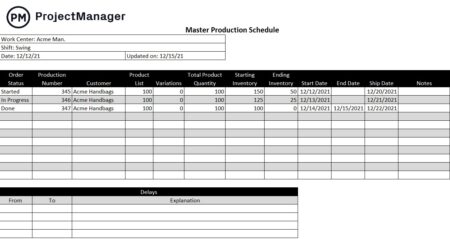
4. Check Your Beginning Inventory
You’ll need to know the amount of inventory you have on hand at the beginning of the time period in which you’ll be going into production. The right amount of inventory will depend on the product you’re making and the overall strategy of the company. Having a large inventory can help you if there is a sudden increase in demand, but it can hurt if demand decreases and you have to warehouse those unsold products, which might never sell or do so for a reduced price.
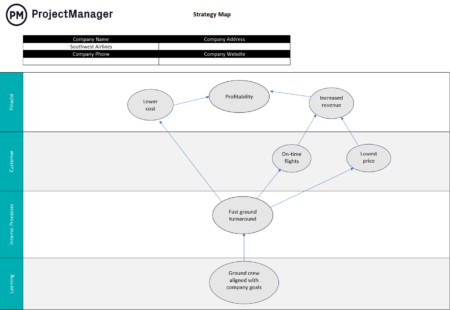
5. Calculate the Required Production
When you’ve determined the beginning and the ending inventory over the time period of production for the product you’re manufacturing, as well as forecast sales numbers, you now have the data necessary to figure out your production budget. There’s a production budget formula that you can follow, which we’ll get to in the next section.
Free Capacity Planning Template
Once you’ve defined your production budget, you’ll need to carefully manage your resources and track your costs. This free capacity planning template for Excel will help you do just that. Calculate your resource utilization, track costs and meet consistently meet demand.
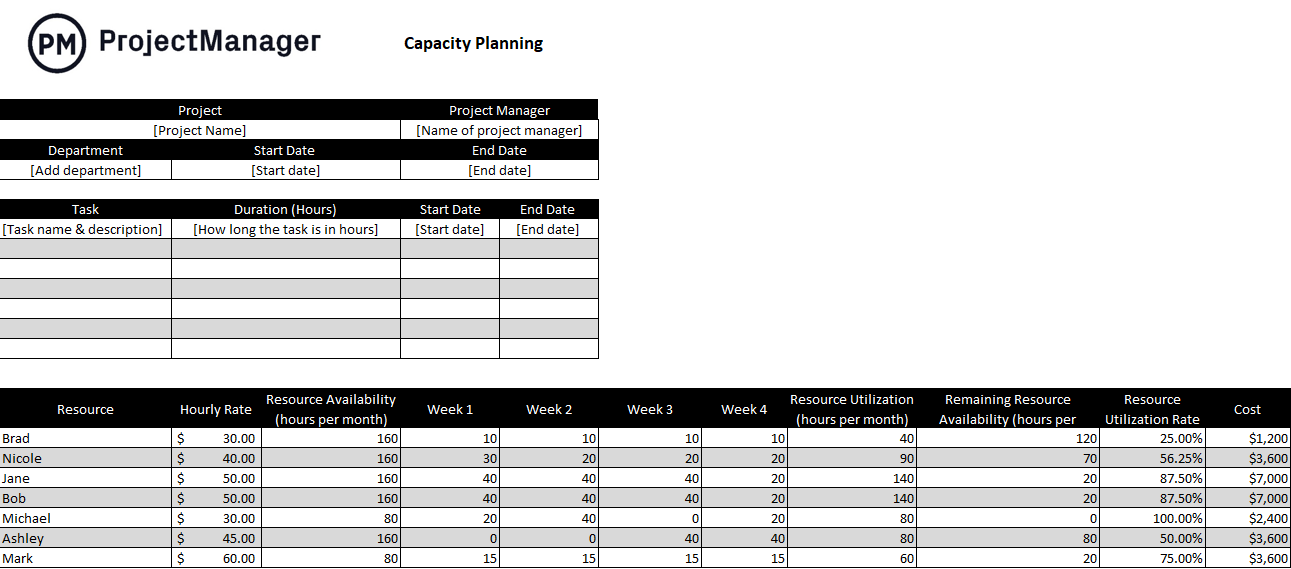
Production Budget Formula
The production budget formula can be determined by multiplying the cost of manufacturing and selling a unit to the estimated number of units you sell. That is subtracted by the total cost of manufacturing and selling those units from the money you expect to get from the sale of those units. Another way to figure this out is by following the formula below.
Required Production = Sales Forecast Expected Units + Desired Ending Inventory – Beginning Inventory
Production Budget Example
To get a fuller understanding of what a production budget is, let’s look at a production budget example to see how the formula works in a real-life situation. Imagine Acme Manufacturing is a producer of widgets that are used in the manufacturing of automobiles. Acme wants to create a production budget for its first quarter of the year.
Amce does a beginning inventory and it figures out that there are 1,000 widgets in stock. With historical data, it determines that the company usually sells about 10,000 widgets in the first quarter. But there could be an increase in demand, according to market research, therefore, Acme wants to have an additional 2,000 widgets on hand at the end of the quarter. Therefore, the product budget would be as follows.
Required Production Units = 10,000 + 2,000 – 1,000 = 11,000 Widgets
Now Acme knows that it needs to produce 11,000 widgets for the first quarter after considering its forecasted sales, current inventory and planned inventory.

How to Track Your Production Process with ProjectManager
Of course, once you have your production budget you’ll need to go into production and there’s a lot that could go wrong during that production cycle. That’s why project management software is so useful, it can help you track your work to make sure you’re staying on schedule. ProjectManager is award-winning project management software that tracks costs, time and resources in real time to help managers make more insightful decisions. Here are just two features that can help you get a high-level overview of production and your labor costs.
Track Your Production With Real-Time Dashboards
To make sure you’re keeping to the production budget you need to monitor the production line. Our real-time dashboard gives you a high-level view of production, automatically capturing production metrics such as time, cost and workload and then displaying them on easy-to-read graphs and charts. Unlike lightweight alternatives, our live dashboard doesn’t require a lengthy setup time. Just toggle over. It’s ready when you need it.

Monitor Your Labor Costs With Secure Timesheets
If your labor costs spike due to delays in production, then your production budget is going to be useless. You need to stay on track and one way to monitor that is by keeping track of your labor costs. Our secure timesheets are easy to use, automatically adding tasks or copying over those from the week before if they’re the same. Managers can see how many hours each team member has been working on their tasks to make sure they’re keeping to the schedule.
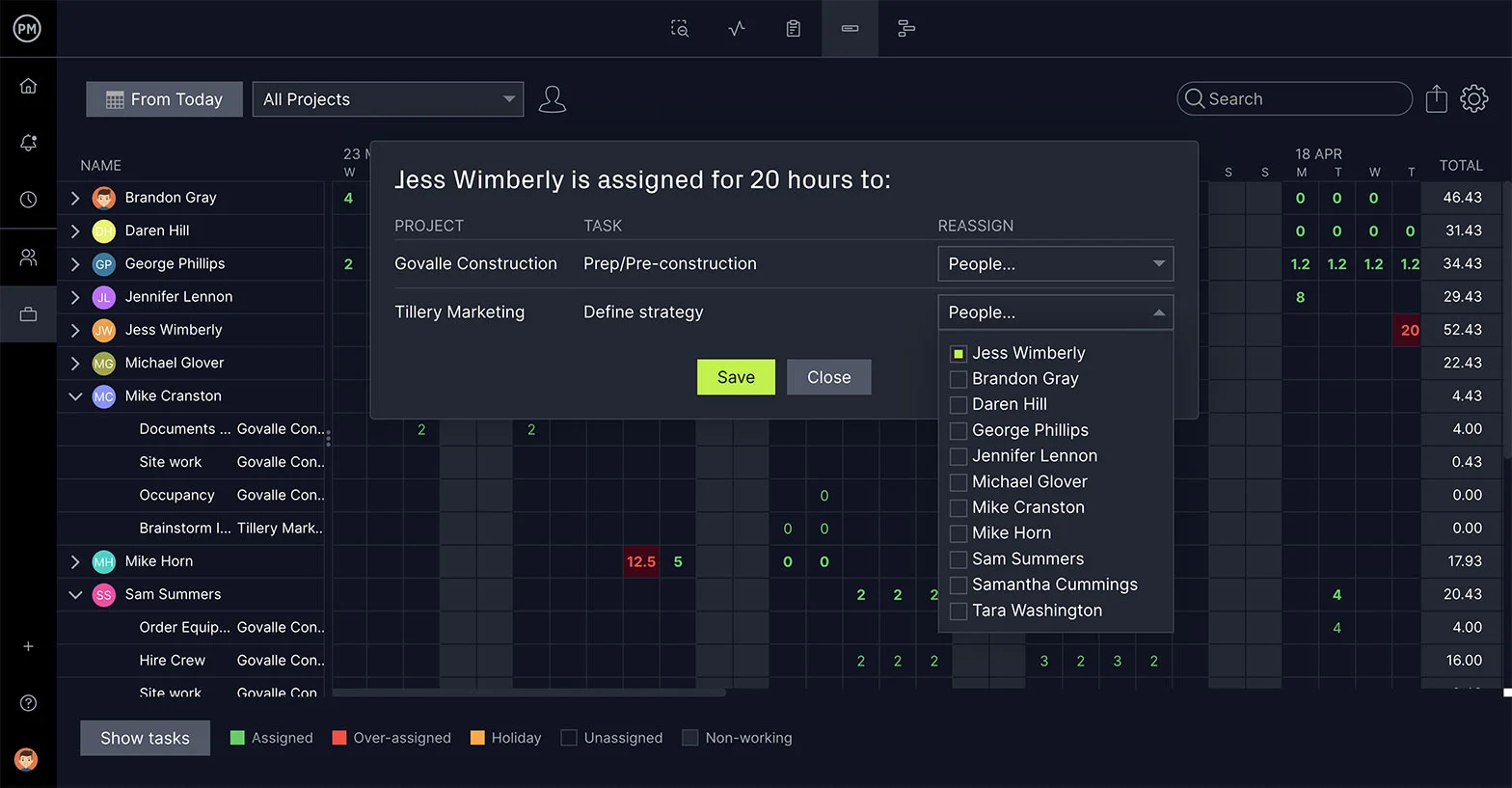
That’s just two ways to monitor your production line. There are also customizable reports, such as status reports and reports on timesheets, variance and more. You can also use resource management features to set availability of your work force and balance their workload by keeping an eye on the color-coded workload chart that makes it easy to see who’s overallocated and reallocate resources right from the chart.
Related Production Management Content
There’s a lot to learn about each area of the scope of production management, which is why we’ve created dozens of blogs, templates and guides to help you streamline the production process of your organization.
- Production Schedule Template for Excel (Free Download)
- Production Tracking: Monitoring the Success of Your Manufacturing Process
- Production vs. Manufacturing: Key Differences
- How to Make a Production Flow Chart for Manufacturing Processes (Example Included)
- How to Make a Production Order for Manufacturing
- Batch Production: Examples, Advantages and Disadvantages
- ¿Cómo Calcular el Presupuesto de Producción? (Con Fórmula y Ejemplo)
ProjectManager is online project management software that connects everyone on the project team in real time. They can collaborate from the office, the factory floor or anywhere in between, sharing files, commenting at the task level and more. Join teams from Avis, Nestle and Siemens who use our software to succeed. Get started with ProjectManager today for free.


